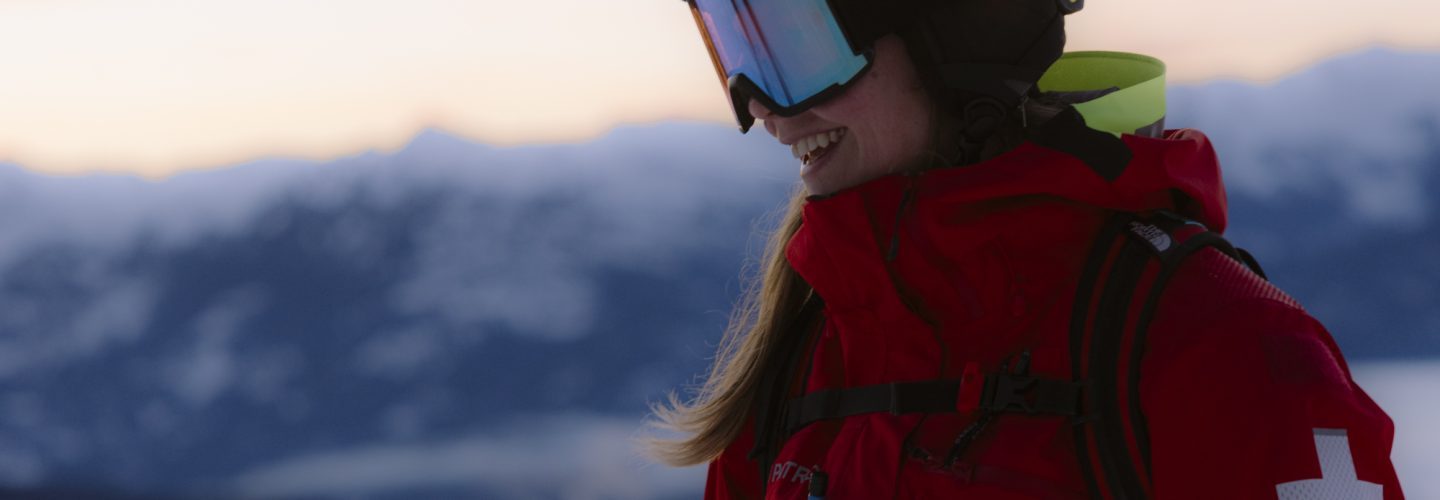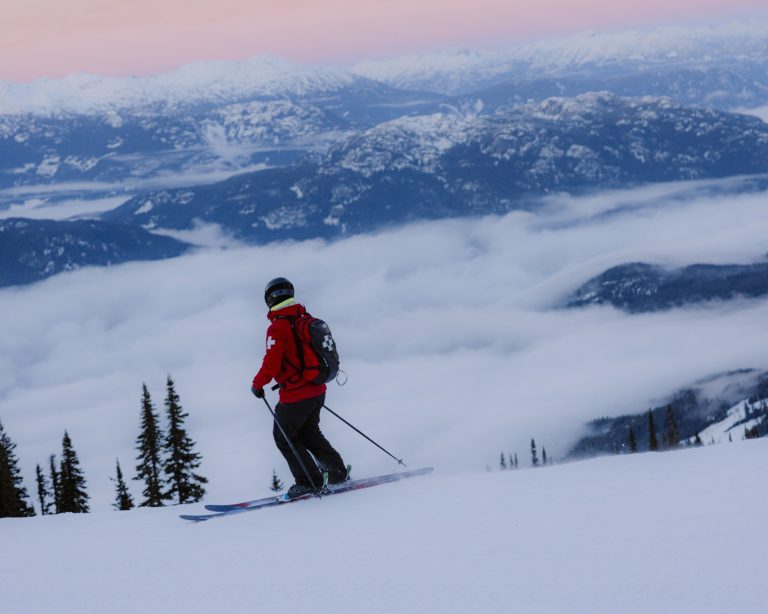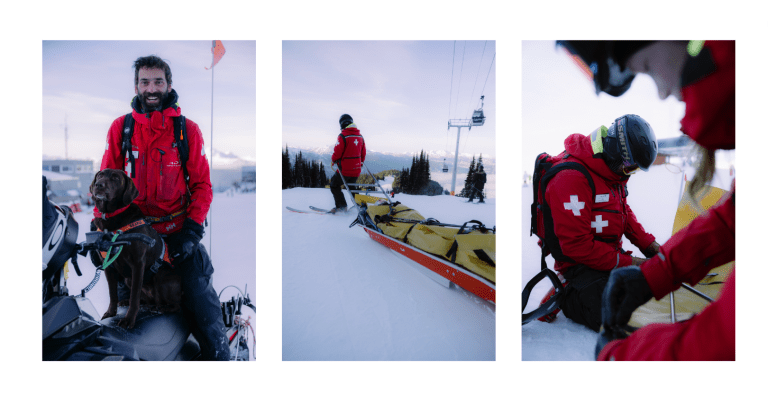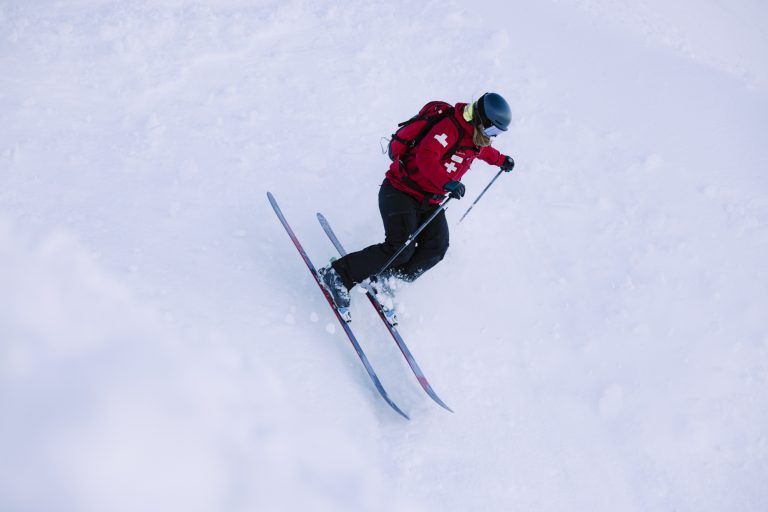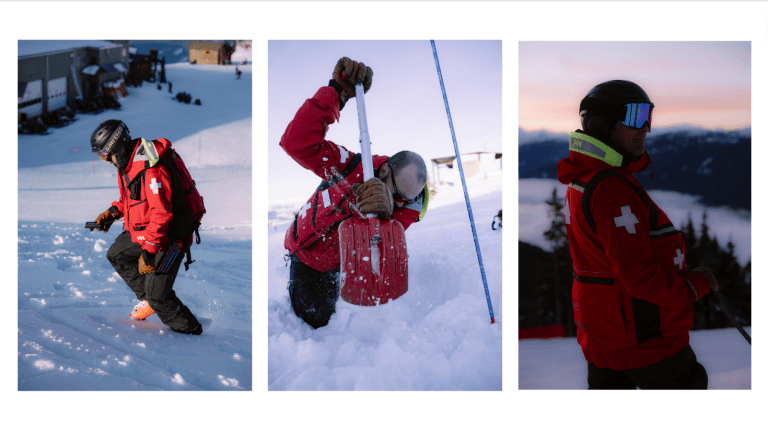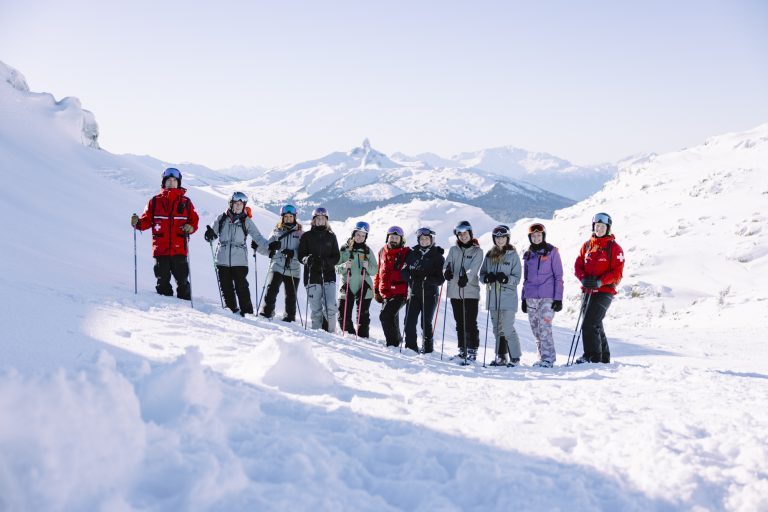There are many things we tend to take for granted when we hit the slopes each morning. There’s the efforts the grooming crew have put into making the slopes perfectly smooth, the work lift teams carry out to keep lifts running smoothly and of course, there’s the incredible work that ski patrol completes day in, and day out throughout the ski season.
As well as being there to provide first aid or rescue if we’re unlucky enough to run into difficulties on the slopes, they’re always there in the background assessing slope conditions and keeping us safe. For many, their day begins in the small hours, long before the lifts open, assessing snow conditions and working to minimise avalanche danger, deciding which terrain is safe to open and which needs to be off limits until conditions improve.
It’s only right, then, that there’s an International Ski Patrol Day in February each year when we can celebrate the hard work of these often-unsung heroes in ski resorts all over the world.
The day’s sponsors, Helly Hansen, donate 5% of revenue from their online sales on International Ski Patrol Day (this year 10 February 2024) to various organisations that support patrollers and safety groups.
Helly Hansen has a great page with information on ski patrol
How You Can Help Ski Patrol (And Yourself)
Keeping yourself and your fellow skiers safe on the slopes by acting responsibly, checking conditions at the start of the day and again through the day, following warning signs and advice and using your common sense all help keep you safe and happy on the slopes and mean you’re less likely to avoid others in an incident and can leave ski patrol to prioritise their work.
You can also take courses at many different levels on safe skiing including knowing which slopes are right for you and what signs of potential danger in snow conditions and weather to be aware of.
Even if you don’t take any safety instructions you should aim to be aware of the worldwide rules of conduct for safety on the slopes.
There are other initiatives on similar lines with a more up-to-date angle like the Piste X code that are well worth familiarising yourself with too.
Interview With Whistler Blackcomb Ski Patroller
We spoke to ski patroller Sean about a typical day on patrol on the slopes of North America’s largest ski area, Whistler Blackcomb.
ITS: What made you want to be a ski patroller?
SP: Initially it was the free skiing! I was in university and I learned if you volunteered for ski patrol you got a free lift pass. Being a poor university student that was a big plus. Then I moved out to Whistler because I loved skiing and I got hired on a contract in my second season.
ITS: What’s the best thing about the job?
SP: It’s just a wonderful team. They are great men and women, some of whom I’ve known for decades and would trust with my life. Together we’ve been through some very intense experiences. It’s just very satisfying to be part of a high-functioning team. There are colleagues who are among the best in the world at things like ropes rescue, explosives handling, weather forecasting and much more.
ITS: so how many callouts do you typically get in a day?
SP: In peak season on a Saturday the team can get as many as 30-40 callouts a day on each of our mountains, Blackcomb and Whistler. The team has approximately 30 patrollers covering both mountains.
ITS: What kind of incidents do you typically deal with?
SP: Well some can be very minor, just that the person feels they can’t go on anymore and have had enough of being in their ski boots. Or it can be a minor injury – a twisted knee or something like that. That’s the majority of what we deal with, but sometimes it’s more serious stuff.
ITS: How do you prioritise calls for help?
SP: Well it’s done on a case-by-case basis. Usually, we pretty much take it in turns. We rarely get many calls at once but of course, if two or more come in about the same time we prioritise the more serious.
ITS: What is the procedure for a more serious call out where you perhaps need to airlift someone from the mountain?
SP: We have very specific criteria we follow before making that kind of call. The first patroller on the scene would make an assessment considering whether the person had multiple broken bones, had been knocked unconscious and so on. Then other times it’s just a feeling that the person looks really unwell and may have internal injuries. If the call is made the patroller contacts our dispatcher who then contacts the helicopter company we work with to find out what’s available – sometimes the weather might not be right for a helicopter to be able to fly in.
ITS: Is it true that helicopter rescue is free, unlike in Europe and The States?
SP: Yes, depending on what the situation is, there are certain situations when you might be charged but realistically in almost every rescue situation in Alberta or BC it’s going to be free. Here at Whistler Blackcomb the availability of rescue if needed is kind of built in as part of the lift ticket you buy. It can be anything from treatment on the scene to a helicopter rescue, help from a doctor to advanced medical treatment. Out in the backcountry, it would be the volunteer search and rescue providing the service. They have a blanket policy, pretty much North-America- wide, that you’re never going to get charged for a required rescue. We don’t want people to not call or delay because they’re worried about the cost. Delays can actually not only make incidents worse but also sometimes more dangerous for ski patrol.
ITS: How do you prepare at the start of the season?
SP: Swell every autumn we go through an extensive process of refresher training which lasts several weeks. We also look at anything new to be aware of. Typically, we’d start with 4-5 days of rope rescue-related training covering how we’d evacuate a chairlift and from a cliff. Then there are several days of first aid refreshers and several days of avalanche-related training.
ITS: What has changed over recent years?
SP: Well one thing we’re doing increasingly is stress management-related training which was not a thing we considered 25 years ago when I started. But we recognise that some parts of our job can be very stressful so we need to take care of our own. The same is true for our mental health of course.
ITS: As part of the job you’re an explosives expert?
SP: Yes all the paid staff at Whistler Blackcomb are part of the avalanche control team so explosives training comes with that and has become an area I’ve specialised in. It’s incredibly tightly controlled with each of us needing to be licensed individually as well as the whole patrol, the storage facility needs government regulation, and the ordering process is also tightly controlled. We have different types of explosives for different scenarios.
ITS: Have you ever had anyone not wanting to be rescued?
SP: Oh absolutely, yes. Sometimes we get called in by someone who has seen someone they think looks like needs help but then when we’ve got to that person they’ve said, “No I’m fine”. But we’ve also had people even with broken bones who want to get themselves off the mountain rather than accept help.
ITS: Finally, if you’re a good skier, what’s the best way to join ski patrol?!
SP: The ideal way is to start as a volunteer. Our volunteer and paid teams work closely together. First, you’d get to spend some time seeing exactly what our day looks like and then decide if it’s what you envisaged and you want to go ahead, or if it’s not for you. If it is then initially you’d get the minimum first aid and CPR training, then more as time goes on and your experience grows. Then when it does get time to hire paid members of the team we pretty much exclusively hire from our volunteers.
To read more about my trip to Whistler with Helly Hansen and The Helly Hansen Women’s Camp’s click here
Image Credits – © Helly Hansen / Michael Overbeck


